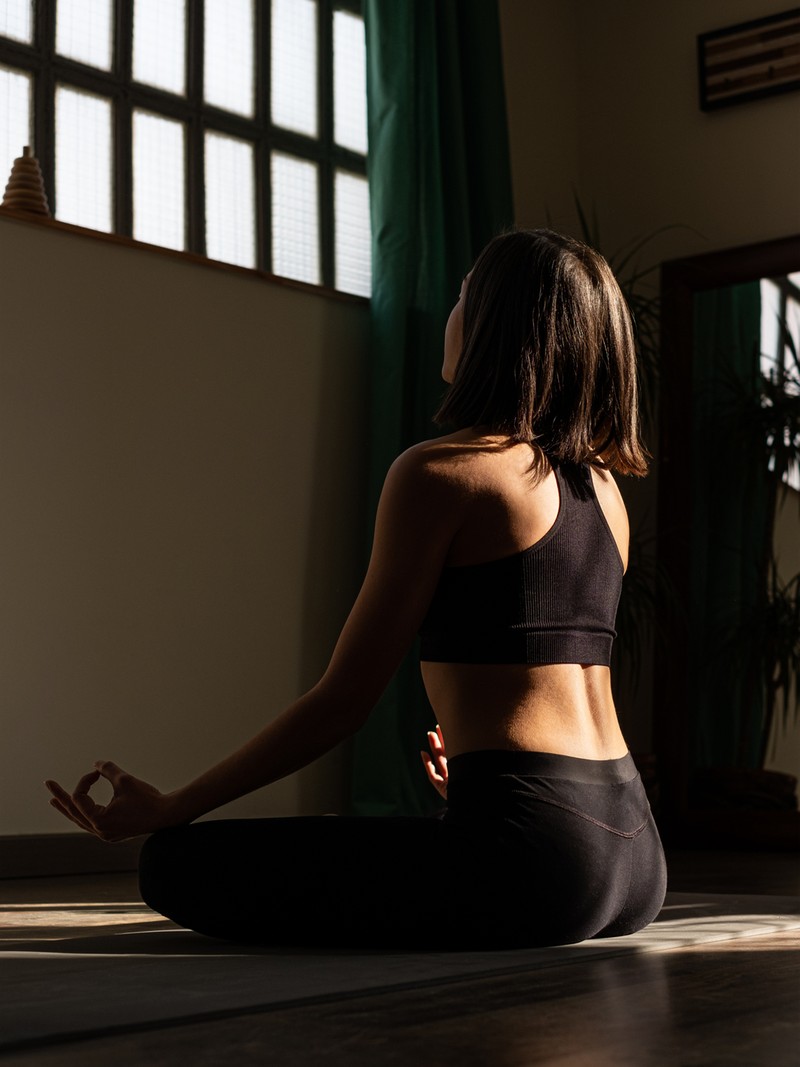How To Get Started With Breathwork
Stress Affects How We Breathe
“Breathwork has been around for years, but it’s the huge rise in stress and anxiety in our modern world that has driven its popularity. Breathwork is an incredibly effective tool for managing both stress and anxiety as the breath is the one bodily function that taps directly into the nervous system. Deep breathing downregulates the nervous system, enabling us to instantly rest and heal. The problem is, the more stressed we are, the shallower our breath becomes, which keeps the body in fight-or-flight mode, and the more stressed breathing we do, the more stressed we become. Bad habits can quickly form, affecting our physical and emotional health.” – Sophie Belle, breathwork & feminine energy coach
It's An Accessible Form Of Meditation
“There’s a sudden interest in breathwork because it’s exactly what people need to manage the intensity of today’s hectic, always-on world. Breathwork is an accessible tool that helps with countless stress-related conditions as it supports the body on a physical, emotional and mental level. It enables you to change your state of mind easily and effortlessly without fancy equipment. Our busy lives give us little time to stop and breathe and it’s easy for the brain to slip into overthinking mode. Think of breathwork as a more accessible form of meditation.” – Lisa Sibley, founder of Breathing Bliss
Oxygen Is The Fuel That Keeps Your Body Running Smoothly
“When you breathe deeply through the nose and into the belly with relaxed shoulders – the three checks you want to be doing daily for healthy breathing – you’ll increase the flow of oxygen to the brain, promoting better energy levels and concentration. When we are stressed, many of us default to mouth breathing, but breathing deeply through the nose will filter germs, protecting against viruses and bacteria, and open blood vessels in the lungs, which translates as better athletic performance, energy, mood and sleep.”– Sophie
Three Minutes Is Enough To See A Difference
“Even a short breathwork session can bring instant results – this is because you’re instantly changing the balance of oxygen and carbon dioxide in the body. In fact, just three minutes of controlled breathing is scientifically proven to improve your heart rate variability (HRV), a key measure of overall health and vitality. Your HRV is the measurement new high-tech fitness trackers like the Oura ring measure to assess your wellbeing. If you practice even more regularly – think five to ten minutes daily or 20 minutes a few times a week – you’ll notice significant mental and physical changes, more energy, better focus, higher levels of confidence and better sleep. Over time, breathwork can also help you overcome negative thought patterns, which can be a huge driver of anxiety and low self-esteem.” – Sophie
It Doesn’t Have To Be Complicated
“Breathwork has nothing to do with spirituality – it’s accessible to everyone. Hold your breath and notice how your anxiety levels rise, and then exhale slowly and notice how you feel. Regardless of what is happening in your life, you can control the way you inhale and exhale, and control emotions and feelings. Breathing deeply – no matter where you are or for how long – will increase the amount of carbon dioxide in the brain and send messages of calm.” – Rodo Escalante, breathwork expert at ØTHERS
6 Ways To Breathe Better...
To Start The Day
“If you don’t have time to meditate in the morning, breathwork is a great alternative. Try cyclic sighing – research shows it’s one of the best techniques to reduce stress in the moment, and the impact lasts throughout the day. Start by taking a long, deep inhale through the nose, then a short, second inhale through the nose, before exhaling fully throughout the mouth. Do this for five minutes.” – Ciara McGinley, meditation practitioner
To Refocus
“Practicing breathwork in nature can do wonders for your wellbeing. When I’m walking outdoors, I bring myself into the present moment by getting rid of any distractions – i.e. no phones or headphones – and tuning into my senses. I notice what I can hear, feel, taste, smell and see. It could be the feeling of sun on your skin or the sound of traffic nearby. Noticing what’s around you as you breathe deeply helps regulate the nervous system and bring you into the present moment.” – Ciara
To Soothe
“Take a few moments to yourself – even if it’s just in the loos at work – and close your eyes, which will immediately regulate the nervous system, and then bring your attention to your breath. Inhale for a count of four and then exhale for a count of seven or eight, which will send your body into ‘rest and repair’ mode. Do this for three minutes and you’ll find you instantly feel calmer and more grounded. Don’t worry if you struggle with the counting – the most important thing is that the exhale is longer than the inhale.” – Sophie
To Boost Energy
“Wave breathing is a simple technique that stimulates the lymphatic system in a controlled way to boost energy. It’s a two-part inhale – breathe into your belly, and then expand the breath into your chest, stretching into both parts of the body as you do this. As you exhale, force out the breath, and repeat five to ten times to reset and energise.” – Sophie
To Unwind
“After a stressful, busy day, the most important thing is to decompress the mind and nervous system. This can only happen when we force our brain to get out of ‘thinking mode’. Box breathing is a great way to recalibrate, switch off from worries and frustrations, and aid sleep. Inhale for a count of four, and then exhale for four, repeating for a few minutes.” – Rodo
To Aid Sleep
“The 4/7/8 technique is amazing for sleep. Breathe in for four, hold for up to seven and then breathe out for a count of eight. Studies show this technique can send you to sleep in 60 seconds. The reason why? This simple technique stimulates your vagus nerve – a key part of your nervous system – and sends a message from the brain to your vital organs that it’s safe to relax and rest.” – Sophie
For more from the experts, visit BreathingBliss.co.uk, OTHERS.co, MindFlowBreathwork.com & follow @CiaraMcGinley_
DISCLAIMER: Features published by SheerLuxe are not intended to treat, diagnose, cure or prevent any disease. Always seek the advice of your GP or another qualified healthcare provider for any questions you have regarding a medical condition, and before undertaking any diet, exercise or other health-related programme.
DISCLAIMER: We endeavour to always credit the correct original source of every image we use. If you think a credit may be incorrect, please contact us at info@sheerluxe.com.


